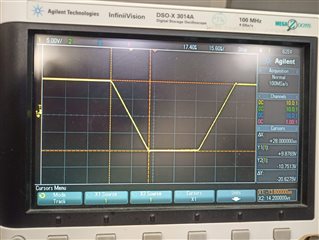Other Parts Discussed in Thread: OPA2277, OPA277
Hi All,
I am using DAC8820ICDBR in Bipolar mode of operation(-10V to +10V) with -10V as Vref in my design. For DAC8820ICDBR, settling time for switching from -10V to +10V is 28us. But the same when measured in DAC8820EVM showed around 8us. Whereas in Datasheet, settling time is mentioned as 0.5us. Please find below the circuit connections used in my design.

We have given similar connections as in DAC8820EVM. Can anybody pls explain why is the settling time changing even after retaining the same circuit?


